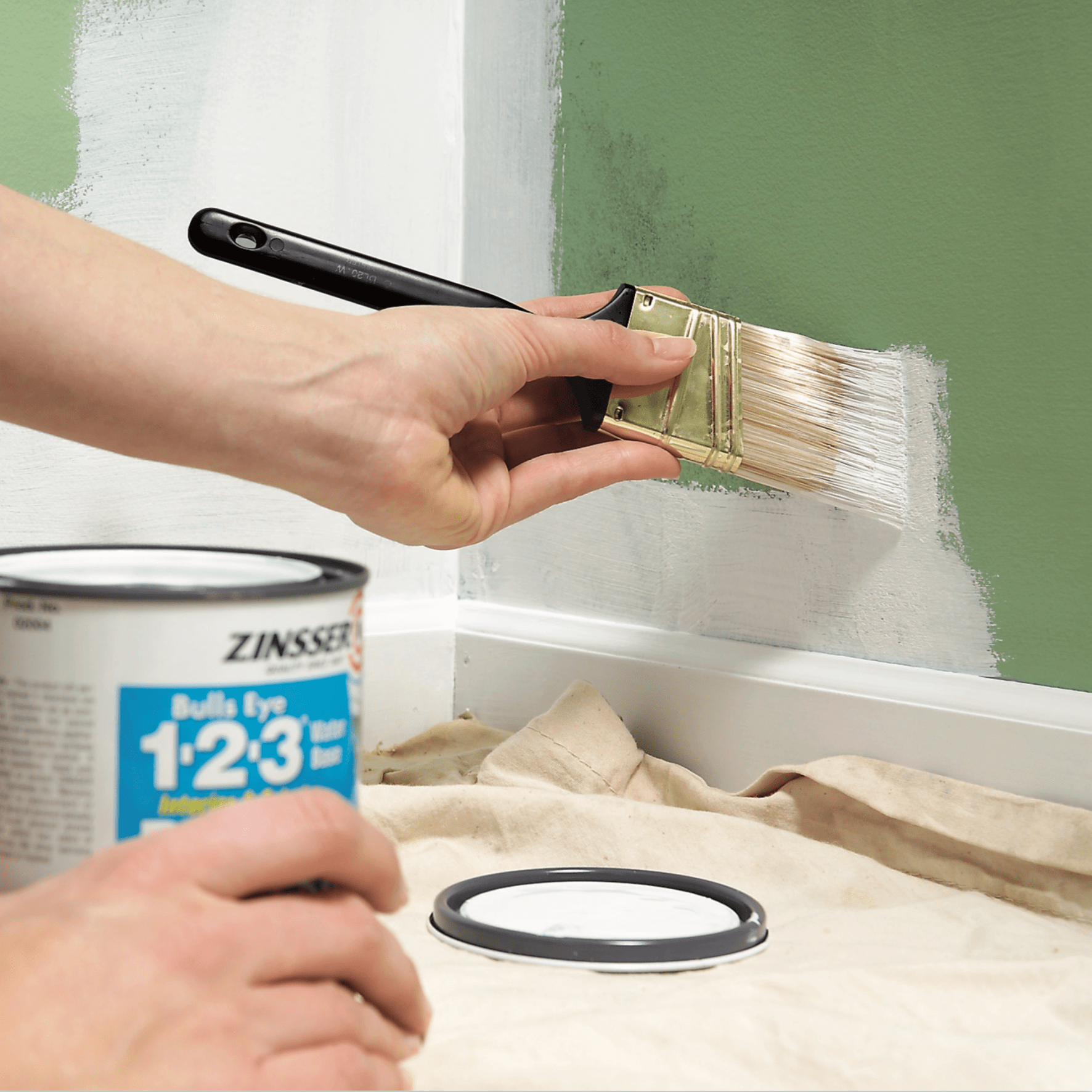Are your walls showing signs of wear and tear? Refresh your room with a quick paint touch-up in three easy steps.

Tips for Touching Up Wall Paint

Painted walls inevitably get scuffed, dented and stained over time, especially in high-traffic areas of your home or when active kids and pets are in the mix.
If your walls are looking worn, you don’t necessarily need to repaint the entire room. A quick touch-up to cover the damaged areas is often enough to recapture that freshly-painted gleam. Here’s all you need to know for a perfect DIY paint touch-up to bring your walls from dingy to dazzling in an afternoon.
On This Page
Tools and Materials for Paint Touch-Ups
Before you tackle the scratches and marks marring your walls, take a few minutes to assemble all the painting tools and supplies you’ll need for your touch-ups:
-
Cleaning materials to wash the wall, including water, mild dish soap, a sponge and a clean rag or towel.
-
Quick-drying surfacing compound, a putty knife and fine-grit sandpaper to repair damage.
-
A wall-repair patch if you need to cover holes that are two inches or more in diameter.
-
Interior latex primer and a small or medium paintbrush, depending on the size of the area you need to retouch.
-
The same type of paintbrush or roller used for the original paint job to match the surface texture and help blend the touched-up portion with the surrounding wall. Match the size of the applicator to the size of the area you need to touch up, keeping in mind that smaller brushes and rollers are more precise.
-
Paint. Ideally, this is leftover paint from the previous coat that you put aside for future touch-ups. If you don’t have any of the original paint, try to match it by purchasing a can of the same brand, color and finish. “You may need to repaint a larger area so it blends better into the wall,” says Five Star Painting president Matt Kunz. So make sure you have enough paint on hand before you start.
First, Prep the Surface
Dirt and grime can prevent your touch-up paint from adhering to the wall, leading to bubbling or blistering. Thoroughly clean the wall with a damp, soapy sponge and dry with a clean towel. Afterward, repair any damage like gashes, dents or small holes to recreate a flawless wall surface.
Apply a wall-repair patch to any holes that are larger than two inches across, following the manufacturer’s instructions. Use fine-grit sandpaper to gently smooth out the surface around the damaged areas. Use a putty knife to fill in indentations with a small amount of surfacing compound, emphasizing smooth strokes to spread it evenly over the indentation and slightly beyond. Scrape away any excess, lightly wipe the filled-in area with a damp cloth and let it dry.
Once the surfacing compound is fully dry, smooth it with fine-grit sandpaper until it is perfectly flush with the surrounding wall. Wipe down the repaired areas to remove any surfacing compound dust.
Second, Prime the Area
“Primers can help hide the transition of color,” explains Rick Watson, director of product information and technical services for Sherwin-Williams. That means primer makes the touched-up area less likely to stand out from the surrounding wall.
Use a small or medium paintbrush to apply a layer of primer over the prepped and repaired spots without extending beyond the area you intend to repaint. Then let it dry completely.
Third, Touch Up the Paint
Use the same paint — or as close as you can get — and the same applicator (brush or roller) to better camouflage the touched-up area.
For tiny touch-ups, opt for a small foam brush to dab paint over the mark. To touch up larger areas, load your brush or roller with a small amount of paint and cover the prepped and primed spots. Feather your strokes slightly onto the surrounding area to create a gradual transition between the new and old paint.
Allow the paint to dry and check your work; there may be areas that need an additional coat or more subtle feathering for a perfect (or nearly perfect) blend. Once you’re satisfied with your touch-ups, carefully store any leftover paint in a cool, dry location away from direct sunlight to ensure you have it for any future work.




















